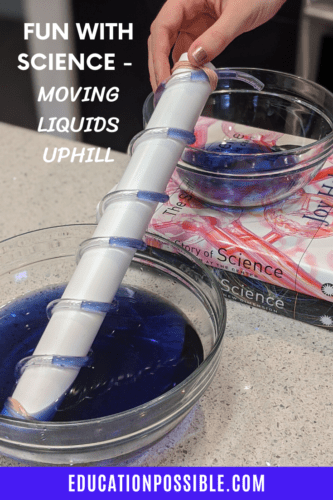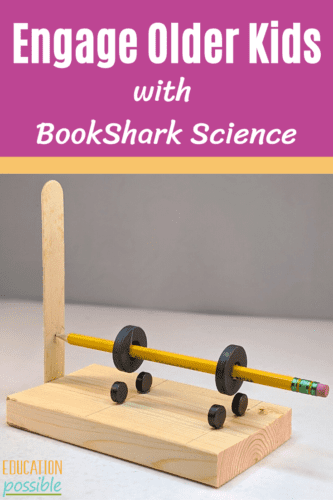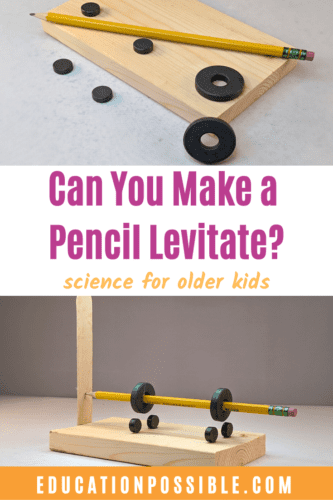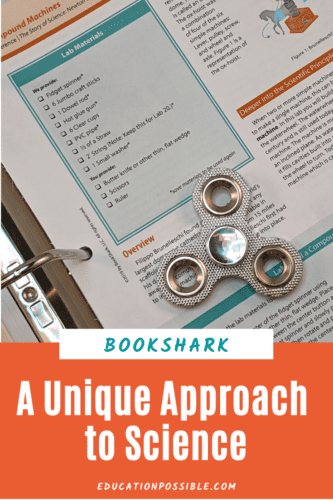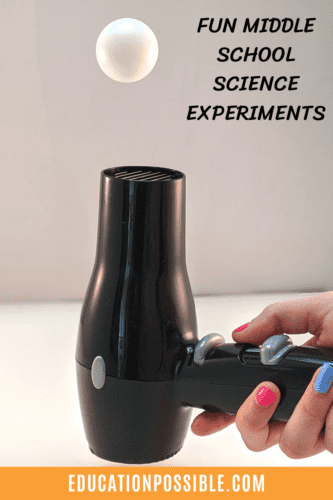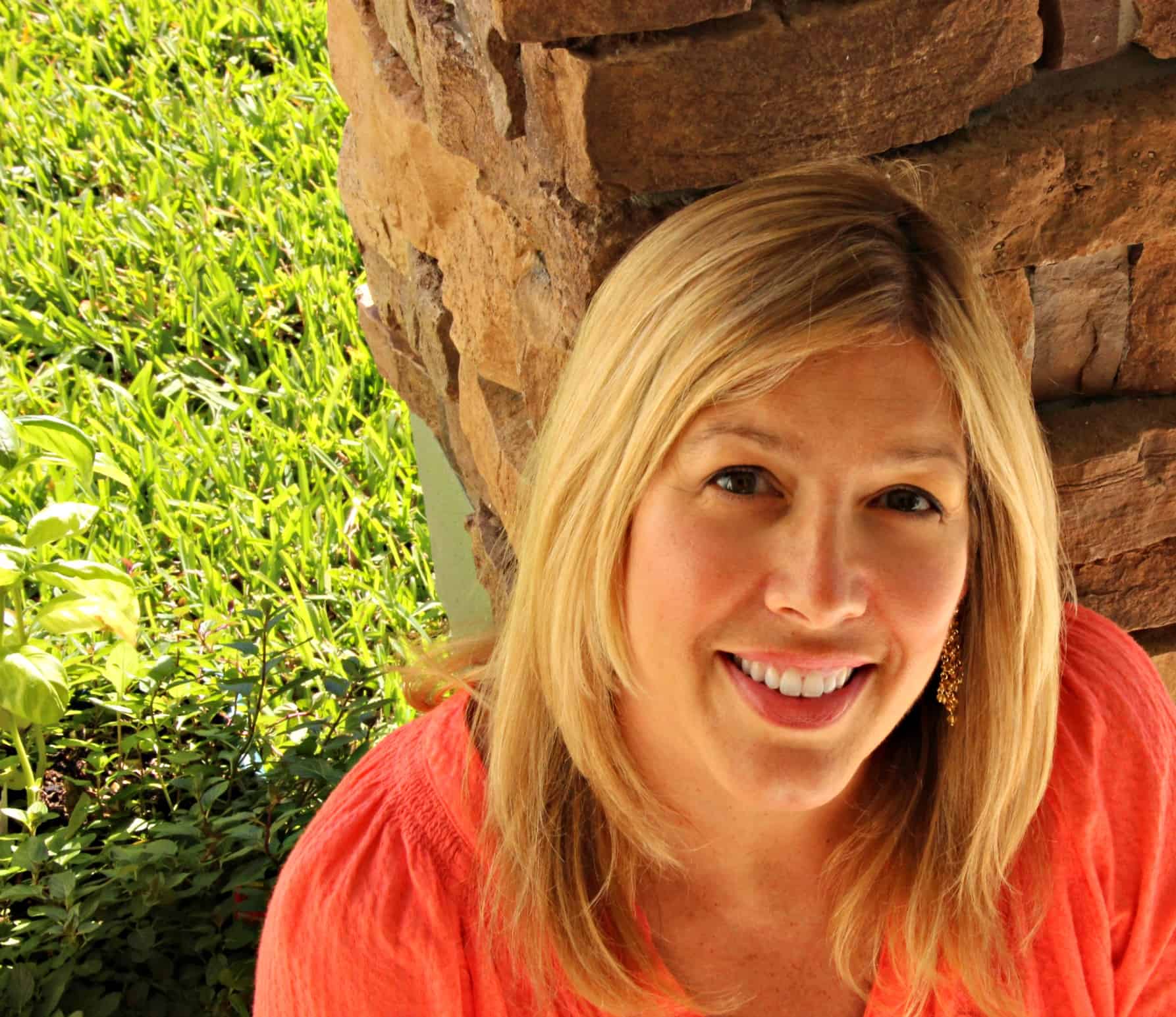BookShark Makes Science Fascinating and Fun for Teens
If you’re looking for a unique approach to teaching middle school science, consider using BookShark Science J Physics, Electromagnetism, and Waves with your teen. This secular science curriculum focuses heavily on the physical sciences, a favorite of many kids, including mine.
It’s incredibly hands-on, containing a large number of labs for students to complete. They build things like simple machines, see electrolysis in action, and experiment with force.
Teens won’t be working on a bunch of random labs though. Instead, this science program ties directly to the corresponding history lessons. Throughout the year, students learn about the inventions created by the famous inventors they’re studying in history. During each lab, they’ll take a closer look at a different discovery and then recreate it themselves to learn more about how it works.
It’s a wonderful way to engage students and give them first-hand experience with some of the key inventions from the past, many of which are still in use today.
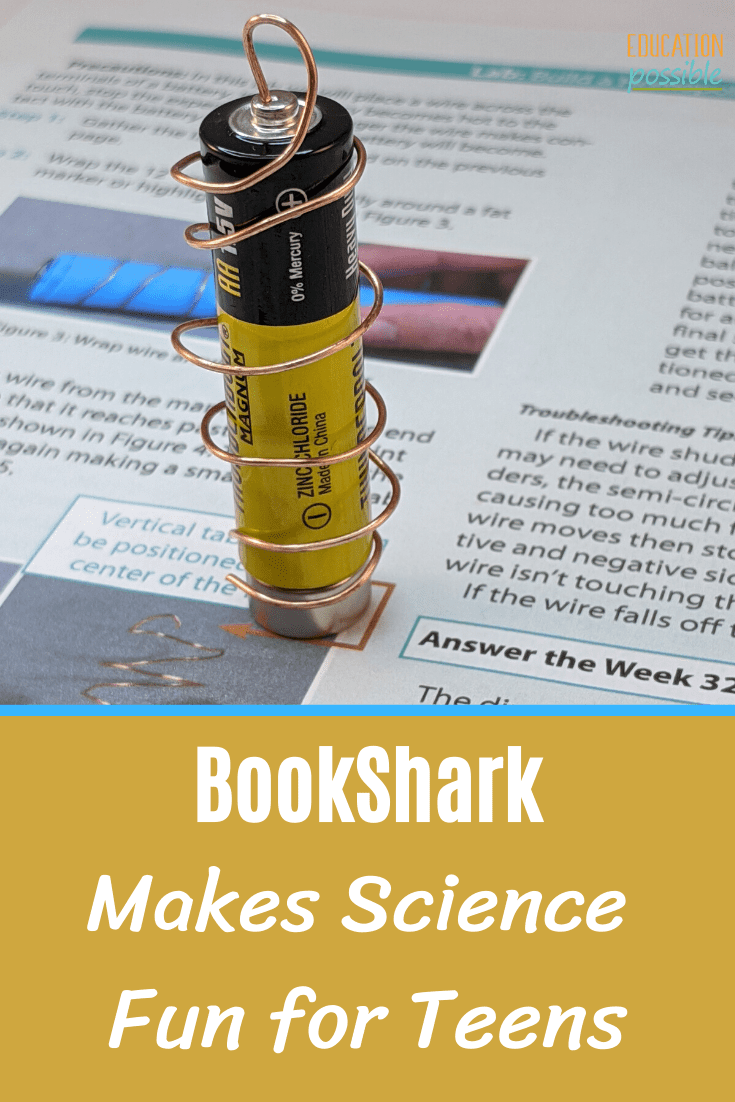
As a BookShark Brand Ambassador, I received a copy of their Level J program in exchange for monthly reviews. All opinions expressed are mine – my disclosure policy.
Science Experiments Made Easy
Science is one of those subjects that many kids enjoy and just as many parents dread. That’s often because students love the hands-on nature of experiments, while moms and dads just see a messy, time-consuming endeavor. Sadly, that can mean that instead of embracing the fun labs, they’re skipped in favor of textbook reading, which teens find boring.
However, I believe the experiments are necessary for older kids to truly understand the material they’re studying.
Luckily, this is one area that BookShark really shines and one of my absolute favorite parts of the curriculum. They make it as easy as possible to get the experiments done. Instead of just giving you a list of materials you’ll need throughout the year, just about everything you need to complete all of the labs in the program is sent directly to your home. Genius!
That means no more running around trying to find obscure objects to do an experiment. There are some household items you’ll need to supply like cardboard, paper, a ruler, rubber band, etc., which should be things you can grab around the house. Every lab clearly lays out what is needed to complete the experiments and whether it’s been supplied for you.
Best of all is the fact that it all comes in a small, convenient box. This is amazing. In previous years, I’ve had to manage a bunch of large totes to store all of our science materials. Now, it all fits in a cube on our homeschool shelf.

Science Without a Traditional Textbook
Instead of using a traditional textbook, BookShark’s Science J: Physics, Electromagnetism, and Waves uses a loose leaf student lab book. It’s where older kids answer questions and record their results from each of the 36 labs.
Before you freak out, know that the unique thing about this program is that the science ties directly to history. That means that as your kids read the history books as part of their History of Science studies, they, in turn, complete a lab that directly relates to it for science.
For example, in The Story of Science (one of the history texts) students read about Galileo and his fascinating discoveries about the pendulum. During the same week, kids build their own pendulum and complete similar experiments as Galileo performed. I love that history and science are so closely connected because it shows kids that science is relatable.
The labs give teens a chance to review the concepts they’re reading about in a fun, practical way. They see for themselves how inventions were created, built, and used. They also learn how to form a hypothesis like a scientist and test it out.
In the student lab book, every experiment includes an overview of the inventor and the invention, what book and page it’s found in the history curriculum, as well as a few paragraphs diving deeper into the scientific principle being studied. On the first page of each lab, there’s a handy list of lab materials needed that is separated by what comes in the box and what you need to provide.
Within the pages, there are clear step-by-step instructions included for every experiment, including a ton of pictures. There are also a few thought-provoking questions for the students to consider after they finish the lab that will get them thinking critically about the experiment.
Questions like:
- What worked well?
- Why did you get the results you did?
- If you changed something, how did (or would) the results change?
Don’t let your kids skip the questions because it’s great writing practice and a simple way to get kids comfortable about the material they’ll be providing during future science classes when they complete traditional lab reports.
Included in this curriculum is also a parent guide and answer key, which will help make science a breeze in your home school.
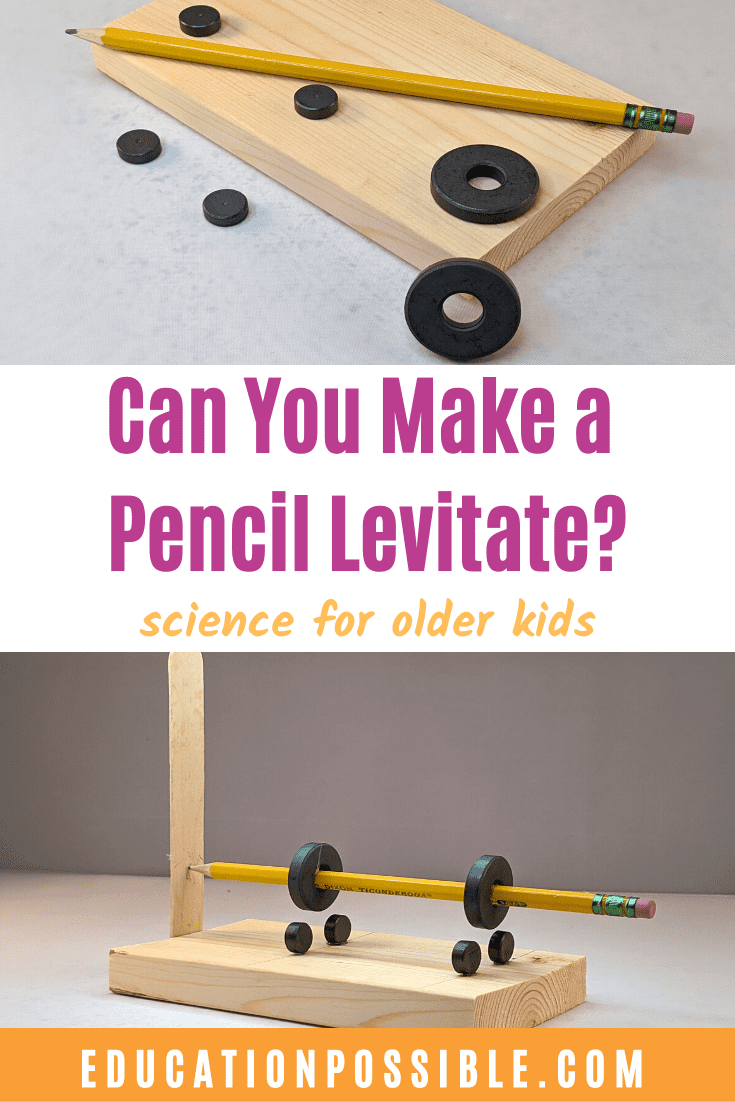
BookShark Science J Experiments
This course, BookShark’s Science J: Physics, Electromagnetism, and Waves, includes 36 different lessons and full experiment labs.
In our homeschool, my teen actually completed most of them on her own. Because I love science so much, I have to admit that I did step in and help with a few experiments, but for the most part, she’s been working on science by herself. Luckily, the way the curriculum is laid out, it’s been incredibly easy for her to do it independently, a feature I look for in curriculum for older kids, especially when looking at an all-in-one curriculum.
Here are a few that my daughter has enjoyed.
- While studying Aristotle she built a launcher to test the theory about gravity and the effect on objects of different masses and whether the direction an object travels makes a difference.
- To learn more about how a telescope works, she completed an experiment with concave and convex lenses to see how light rays react differently with them as well as how the radius of the lens affects the refraction.
- When reading about Leonard Da Vinci, she re-created his self-supporting bridge. I have to tell you that we’ve tried to build this a couple of times over the years and failed. But with the clear, step-by-step instructions and multiple pictures, she was able to finally construct this bridge.
- As part of a lesson on magnetism, she built a levitating pencil, by working with both magnetic and gravitational force.
- While studying the concept of light as a particle, Marianna assembled a spectroscope to compare spectrums of light.
- We had a lot of fun constructing our own Archimedes screw to see if we could get water to move upward and learn more about what role this played in history, especially Egypt, and how it’s still used today. Here’s the video we made showing how to build and use an Archimedes screw.
If you’re looking for a secular science program that’s full of fun, hands-on, practical experiments, that’s incredibly well laid-out, you should take a look at this course. It’s full of interactive labs, so students won’t be bored as they move through the material.
My teen has definitely enjoyed the fact that she’s been able to do a wide variety of experiments in science this year. As I’ve mentioned before, we’ve been using BookShark’s Level J All-Subject Package, which includes science, math, language arts, and a unique approach to history.

